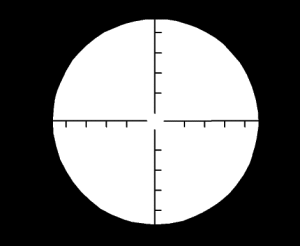The Propositional logic (or statements), also known as the logic of truth functions, is the oldest branch of mathematical logic that studies propositions, arguments, sentences or statements, methods of relations through logical connectors and the links and properties that result from these procedures.
Propositional logic supports reasoning, through an instrument that first assesses simple problems and then more complex problems established by using connectives propositional.
Advertisements

In this article you will find:
Truth value
Given the proposition is true, V, or is it false, F. If a proposition p is true, its negation, which is written p and read "not p ”, is false. The truth values in a statement p are V or F.
Given a proposition p it happens that p is true or that p is true.
Advertisements
The Veritative-Functional Connectives and their Tables
In natural languages there are many ways to combine sentences with each other. It is generally done by means of a variety of particles that the grammar popularly calls "conjunctions".
Of these conjunctions only a subset of them is of interest to propositional logic. Typically, the following are qualified as main connectives:
Advertisements
no, and, or, if... then, if and only if (yes), being his symbols:
The common peculiarity of all of them is that they are Veritative-functional. What does this mean? Simply, that by means of them and a simple proposition (in the case of), or two simple propositions (in the case of connectives remaining), compound propositions can be established where the truth value is exceptionally a function of the truth value of the components. This being the case, if we have the propositions:
Advertisements
(1.3) Mozart was born in Vienna, and
(1.4) Mozart composed the Marriage of Figaro
Advertisements
We can form:
(1.5) Mozart was born in Vienna and (Mozart) composed the Marriage of Figaro.
(1.5) These propositions will be true only, in the case in which (1.3) and (1.4) are in the same way and false in the rest of the cases. This means: once the truth values of (1.3) and (1.4) are set, it is automatically established that of (1.5) or any other compound created from any of the mentioned connectives previously. For this reason, propositional logic is also called the logic of truth functions.
It is indicated that two propositions are logically equivalent when both have the same truth values in all the value components of the simple propositions that make them up. This means that, in each of the proofs of both propositions, the truth values of the two propositions are equal.
| TO | B | |
| V | V | V |
| V | F | F |
| F | V | F |
| F | F | F |
| TO | B | | |||
| V | V | F | V | V | V |
| V | F | V | F | F | |
| F | V | V | V | V | F |
| F | F | F | V | V |
As we see in this table, the formula (A B) is only true when A is true and B is true, being false in all other cases.
It is read "not-A" and is considered the negation of A. Since the connective needs only one proposition, its truth value will be directly established by its only propositional component A.
| TO | B | |
| V | V | V |
| V | F | F |
| F | V | F |
| F | F | F |
The symbol is used for exclusive disjunction, for both senses of "or" they have a common use in natural signs, although the same word "or" is used for both.
Logical operators
The logical operators are those that allow to connect simple propositions to form compound propositions.
Conjunction
The conjunction operator is used to link two propositions that must correspond for a true result to be achieved. This means, the compound proposition that encloses a conjunction is confirming that the simplest propositions are being fulfilled. To represent it, the symbol ∧ is used. In the same way it is known as logical multiplication, operator “and”, operator “and”. These are other symbols that can represent "." Y
“∩”.
Weak disjunction
With this weak disjunction operator a true result is obtained when one of the propositions is true. It is often represented by the symbol ∨. It is also called logical addition, "or" operator, "or" operator. These symbols "+ ∪" and "" are used to represent it. Similarly, it is known as: weak disjunction, non-rigorous disjunction, "copulative disjunction" and "" inclusive disjunction.
Strong disjunction
By means of the strong disjunction operator, a punctually true output is found if one of the operands is true and the other is false. If both operands have the same truth value, the output is false. In addition, it receives the name of dividing disjunction, rigorous disjunction and exclusive disjunction. To represent it, the symbol v is used with a point in the ‘interior’, in the same way it can be represented with the Greek letter delta in capital Δ.
Denial
Negation is a special connective because it does not relate propositions, but applies exclusively to a single proposition. It is very easy to understand using examples:
We have these propositions:
- The book is red.
- The number eight is even
Certainly, from it, new propositions can be constructed that will be its negations, using the particle "no"
So we get:
The book is not red.
The number eight is not even.
Notation
Propositions are represented using lowercase letters of the alphabet, generally beginning with the letters p, q, r... z. In some cases it is necessary to represent many more propositions. In these cases, any of the other letters of the alphabet may be used, as long as it is in lower case.
Biconditional
It is denoted by the expression "If and only if", If we use the phrase"the animal meows yes and only if it is a cat”On this occasion, the compound proposition is true if both are simple, both at the same time true or both false, if one is true and the other false, the compound will be false.
Do you have any doubt left? Let us know in the comments.


